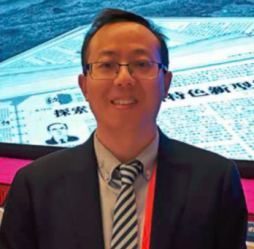


Welcome Prof. Wu Feng from Journalism and New Media school,Xi' an Jiaotong University to be the keynote speaker of NMDME 2021

Prof.Wu Feng
Journalism and New Media school, Xi'an Jiaotong University
Research Area:
Chinese national leader's press conferences, Chinese political communication, quantitative research, Chinese newspaper marketing & management, culture industry, and new media
Brief introduction of your research experience:
Feng Wu (PhD, School of Journalism and Communication, Huazhong University of Science and Technology, 2009) is a full professor of Journalism and New Media school at Xi’an Jiaotong University in Xi’an, Shanxi, P. R. China. His research interests include: Chinese national leader’s press conferences, Chinese political communication, quantitative research, Chinese newspaper marketing & management, culture industry, and new media. He is a productive young researcher. In recent five years, he had published FOUR English articles in leading journals indexed in SSCI, and more than thirty Chinese articles in leading journals in journalism & communications field (indexed in CSSCI). He has finished more than 10 important projects (funded and principal investigator). By the end of 2016, his total fund is about one million (¥2 million, about $ 0.3 million), which is outstanding compared with his peers.
Speech Title:
Research on the Development Status and Cognitive Effect of Artificial Intelligence Anchor
Abstract:
For a long time, anchors have been considered as a human-specific profession, but the birth of artificial intelligence anchors has subverted this traditional cognition. With the in-depth development of artificial intelligence technology, the introduction of artificial intelligence technology into the field of video news has resulted in more diversified news products. Intelligent machine anchors have gradually taken on tasks such as hosting and broadcasting in radio, television, Internet and other media, and are aware of users The effect has a certain impact. Although delayed, it has renewed the traditional radio, television and video programming production process and has attracted widespread interest from all disciplines.
Artificial intelligence anchors refer to intelligent media products that are driven by artificial intelligence technologies such as big data, machine learning, virtual synthesis, and human-computer interaction, and are responsible for hosting and broadcasting functions in media such as radio, television, and the Internet. Research has found that artificial intelligence anchors have the characteristics of interaction between embodied cognition and detached cognition, the combination of intelligent technology and anchor art, and the coexistence of subject and object identity. It is the latest and highest stage of the development of artificial intelligence video news. The development of global artificial intelligence anchors has gone through three stages: research origin and germination, technological exploration and accumulation, and synthetic application. The current global artificial intelligence anchors are experiencing from low-level to high-quality applications, from single mode to customized production, from "machine for people" to "human-machine collaboration" development, from mechanical transmission to emotional interaction development, from non-commercialization to non-commercialization. The continuous development of commercial applications and other levels has further affected human anchors, industrial patterns and public vision.
Artificial intelligence anchors directly affect human anchors, and they are constantly taking on the role of direct dialogue between the media and audiences and disseminating information like human news anchors. The audience's attitude towards artificial intelligence anchors needs to be tested for effectiveness. Based on this, the article uses comparative experiments and in-depth interviews to study the audience's cognitive and emotional effects on artificial intelligence anchor news and human anchor news. The experimental results show that, compared with the news of human anchors, the information transmission effect of news of artificial intelligence anchors is weakened, and the audience shows a higher degree of comprehension of the news of human anchors, but there is no obvious difference in love and credibility. It is different from people's general perception. The results of the interview showed that the audience generally had positive feelings about the news of artificial intelligence anchors and a positive attitude towards their future. They believed that the rational and optimized application of artificial intelligence anchors was the general trend. But there are also certain negative sentiments about some issues. The study also suggests that in the era of deep media integration, user-centered product design ideas should be adhered to, innovative News products combined with the characteristics of artificial intelligence anchors that are suitable for audiences, and continuous development in the direction of human-machine collaboration.
Key words:
Artificial intelligence anchor; Synthetic application; Human-machine collaboration; Cognitive research; Emotional and effects
Personal Web Sites:
http://xmtxy.xjtu.edu.cn/info/1018/1094.htm